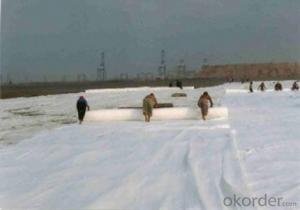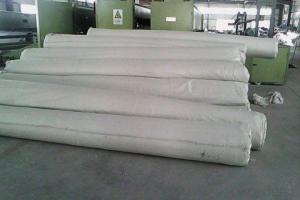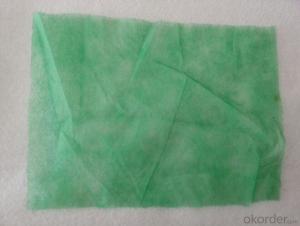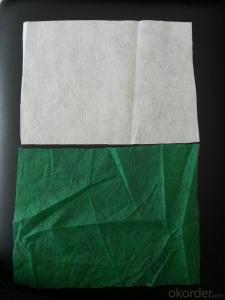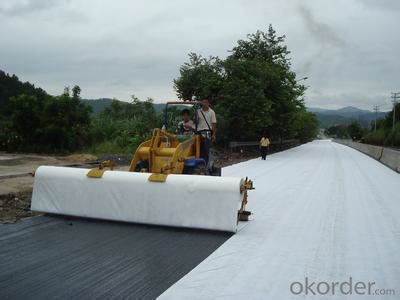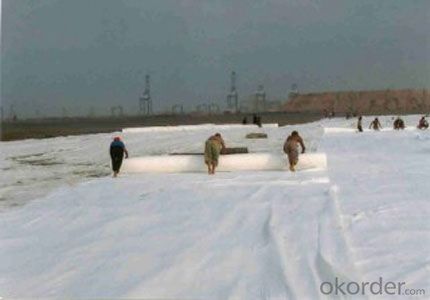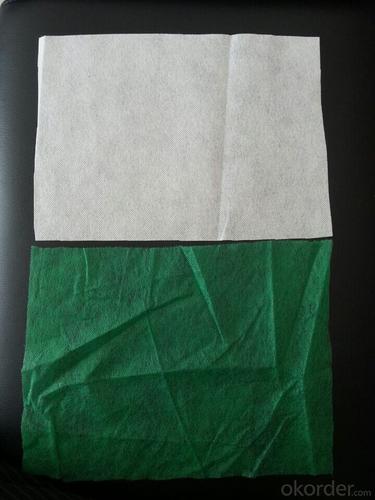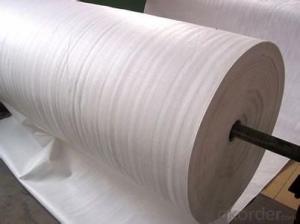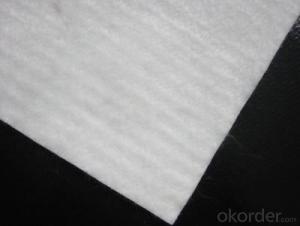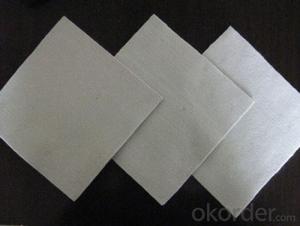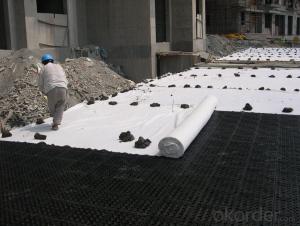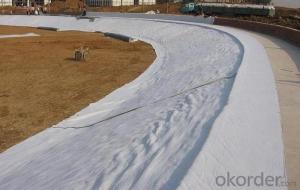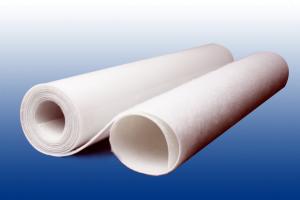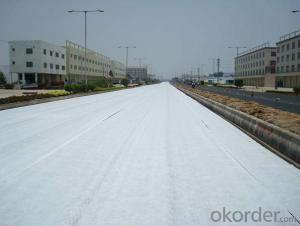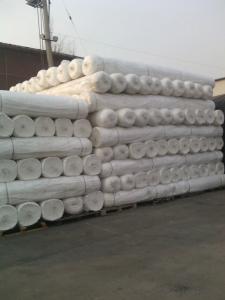Biodegradable Geotextile Fabric - Staple Fibers Punched Non Woven Geotextile Direct Factory
- Loading Port:
- Qingdao
- Payment Terms:
- TT OR LC
- Min Order Qty:
- 1000 g/m²
- Supply Capability:
- 100000 g/m²/month
OKorder Service Pledge
OKorder Financial Service
You Might Also Like
Introduction:
Staple fibers needle punched non woven geotextile is made of PP or PET staple fibers on carding cross- laying equipment and needle punched equipment.
Application: Mainly applied in water conservancy, road and railway for strengthening, separation, reversed filter and drainage of projects
Properties of Staple fibers needle punched non woven geotextile
Item (g/m2) | 100 | 150 | 200 | 250 | 300 | 350 | 400 | 450 | 500 | 600 | 800 | Note |
Mass error in unit area (%) | -8 | -8 | -8 | -8 | -7 | -7 | -7 | -7 | -6 | -6 | -6 | |
Thickness (mm) ≥ | 0.9 | 1.3 | 1.7 | 2.1 | 2.4 | 2.7 | 3.0 | 3.3 | 3.6 | 4.1 | 5.0 | |
Error of width (%) | -0.5 | |||||||||||
Breaking strength (KN/m)≥ | 2.5 | 4.5 | 6.5 | 8.0 | 9.5 | 11.0 | 12.5 | 14.0 | 16.0 | 19.0 | 25.0 | MD/CD |
Elongation at break | 25~100% | |||||||||||
CBR puncture resistance (KN)≥ | 0.3 | 0.6 | 0.9 | 1.2 | 1.5 | 1.8 | 2.1 | 2.4 | 2.7 | 3.2 | 4.0 | |
Equivalent Pore size O90( O95) | 0.07~0.2 mm | |||||||||||
Vertical permeability coefficient | K×(10-4~10-3)cm/s | K=1.0-9.9 | ||||||||||
Tearing strength (KN)≥ | 0.08 | 0.12 | 0.16 | 0.20 | 0.24 | 0.28 | 0.33 | 0.38 | 0.42 | 0.46 | 0.60 | MD/CD |
Images of non woven geotextile
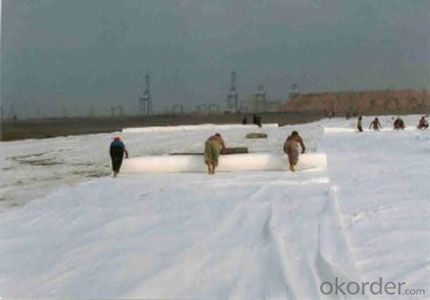
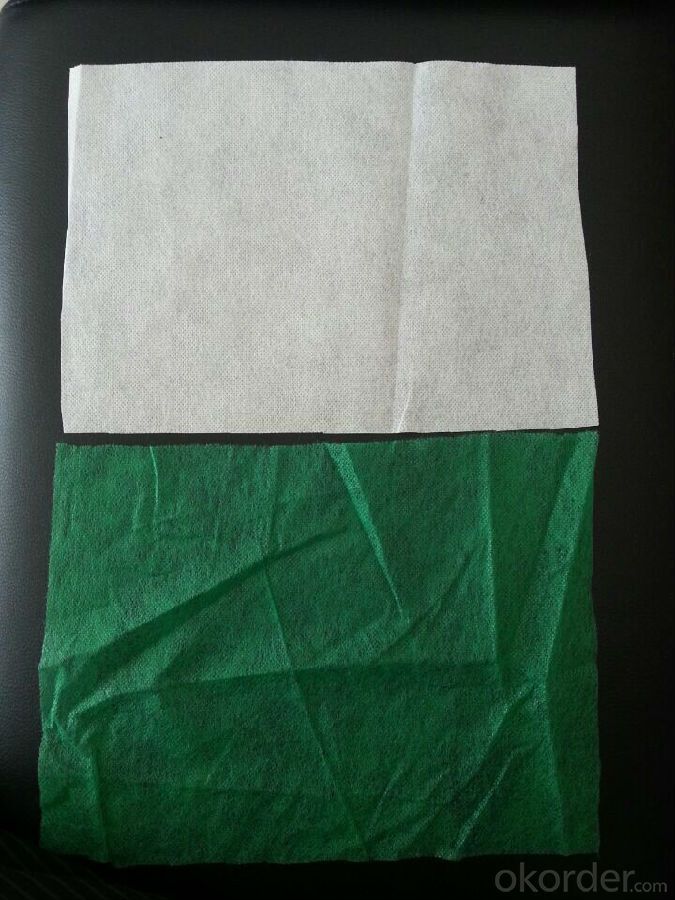
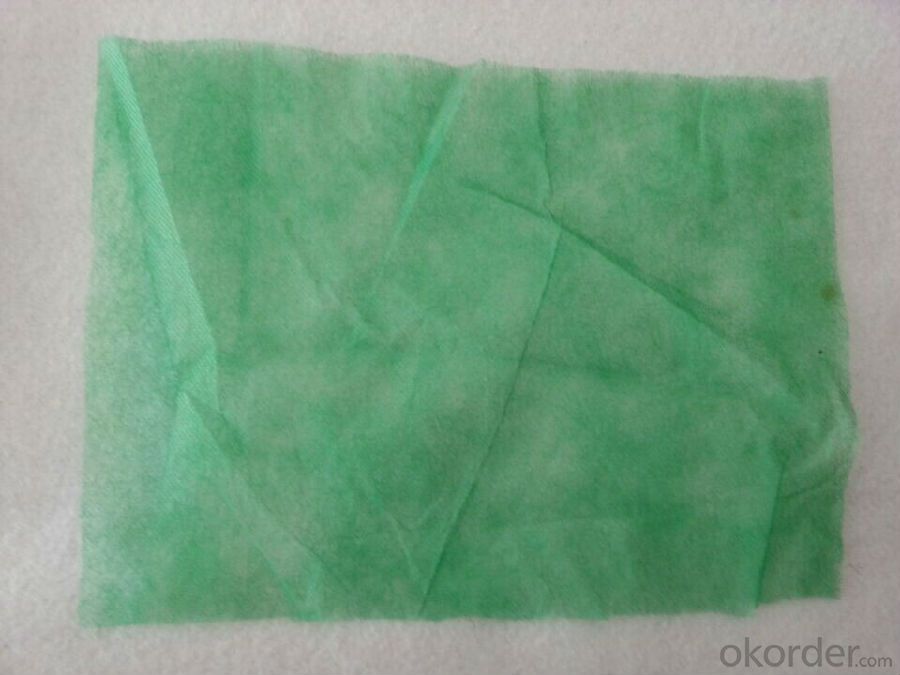
- Q: Characteristics of nonwoven geotextiles
- Non-woven geotextile has many advantages: 1) air permeability 2) filterability 3) insulation 4) water absorption 5) waterproof 6) stretch 7) not disheveled 8) feel good, soft 9) light 10) Can be restored 11) without the direction of the fabric 12) compared with the textile production of high productivity, production speed 13) low prices, can be mass production and so on. Disadvantages are: 1) Compared with the textile fabric strength and durability is poor; 2) can not be washed as other fabrics; 3) fiber arranged in a certain direction, so easy to split from the right angle and so on. Therefore, the improvement of the production method has been mainly focused on preventing the improvement of the division.
- Q: How do geotextiles help with weed control in landscaping projects?
- Geotextiles aid in weed control in landscaping projects by acting as a barrier between the soil and the weed seeds. These permeable fabrics allow water and air to pass through, ensuring proper drainage and maintaining soil health, while preventing weed growth by blocking sunlight and impeding weed seed germination.
- Q: How are geotextiles used in retaining walls?
- Geotextiles are used in retaining walls to provide reinforcement and stability. They act as a separator between the soil and the retaining wall, preventing soil erosion and promoting drainage. Additionally, geotextiles help to distribute the pressure exerted by the soil, reducing the risk of wall failure.
- Q: Are geotextiles suitable for use in railway ballast stabilization?
- Yes, geotextiles are suitable for use in railway ballast stabilization. Geotextiles help to improve the strength and stability of the ballast layer by preventing the migration of fines and providing reinforcement. They also help to distribute loads evenly, reduce track settlement, and increase the overall lifespan of the railway track.
- Q: What are the different geotextile manufacturing processes?
- There are several different geotextile manufacturing processes, including needle punching, thermal bonding, and weaving.
- Q: Roof garden pool at the bottom with pebbles, pebbles above with geotextile, geotextile above the soil
- Should be installed drainage board it! Geotechnical material manufacturers to answer!
- Q: How do geotextiles help with erosion control on shorelines?
- Geotextiles help with erosion control on shorelines by acting as a barrier against soil erosion. They are placed on the shoreline and prevent the movement of soil particles, while still allowing water to pass through. This helps to stabilize the soil, reduce erosion, and protect the shoreline from further damage.
- Q: What are the key factors affecting the clogging behavior of geotextiles?
- The key factors affecting the clogging behavior of geotextiles include the particle size and gradation of the soil or other material being filtered, the permeability and porosity of the geotextile, the hydraulic loading conditions, the presence of fines or clay particles in the soil, and the duration of exposure to clogging agents. Other factors such as the geotextile's physical and chemical properties, the presence of biological organisms, and the maintenance practices also play a role in determining the clogging behavior.
- Q: Can geotextiles be used in landfill applications?
- Yes, geotextiles can be used in landfill applications. They are commonly used as part of the liner system in landfills to separate and stabilize different layers of soil and prevent the migration of contaminants. Geotextiles help enhance the overall performance and environmental protection of landfills by promoting proper drainage and reducing the potential for erosion.
- Q: Can geotextiles be used for reinforcement of underground tunnels?
- Yes, geotextiles can be used for reinforcement of underground tunnels. Geotextiles are permeable fabrics that can provide soil stabilization, erosion control, and reinforcement. When used in the construction of tunnels, geotextiles can help to strengthen the surrounding soil, prevent soil erosion, and enhance the overall stability and durability of the tunnel structure.
Send your message to us
Biodegradable Geotextile Fabric - Staple Fibers Punched Non Woven Geotextile Direct Factory
- Loading Port:
- Qingdao
- Payment Terms:
- TT OR LC
- Min Order Qty:
- 1000 g/m²
- Supply Capability:
- 100000 g/m²/month
OKorder Service Pledge
OKorder Financial Service
Similar products
Hot products
Hot Searches
Related keywords

